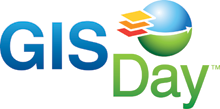Yesterday, it is estimated that the global human population reached 7 billion people. In response, ESRI has highlighted a map they have created that shows the world population by country. In addition to the symbology showing geographic distribution, users can also click on individual countries to access a pop-up window that shows the precise population and population graphs. If you want to know where you fit in in this world of 7 billion, check out What’s Your Number? from Population Action International.
Category Archives: GIS
Demographic Resources from Cornell University
The Cornell University Program on Applied Demographics (PAD) website possesses some great Census related resources. The first is a margin of error calculator for American Community Survey data which was created based on this U.S. Census Bureau document. The calculator allows you to enter values and operations in order to compute new margins of errors or test for significance of the difference between values.
Second, if you are looking for maps of current demographic data for the state of New York, then this site’s Census 2010 Atlas will be especially helpful. It has an easy to use index that allows users to choose what map to display. Once the map is displayed you can easily download a professionally prepared map in the form of a JPEG file.
The PAD website also has additional resources including white papers, presentations and more.
An Openly Editable Spatial Database: Wikimapia
 |
| A screenshot of Storrs, CT from Wikimapia. |
Wikimapia is an open, online Geographic Information System that displays Google imagery and allows users to add information. Although the information displayed on Wikimapia is unofficial, the application allows users to build a spatial database and collaborate on a global scale, like Wikipedia . For more, visit the Wikimapia Forum.
An Update on ESRI’s Occupy Wall Street Map
 |
| The ESRI Occupy Wall Street map now displays locations of demonstrations. |
A little over a week ago, I posted the ESRI produced Occupy Wall Street map. One of the items I noted was how the content was mostly limited to the occupation in Manhattan. Just over ten days later, the capabilities of this map have been expanded and the amount of content has grown exponentially. In addition to YouTube videos, Tweets, and images from Flickr, the OWS map now displays Occupy locations (which span the entire globe – see screenshot above) and a tool that allows users to quickly zoom to different cities located under the Areas of Interests button.
ESRI Develops Interactive Map of Occupy Wall Street Protests
As they did for Hurricane Irene, ESRI has developed an interactive map that showcases social media related to the Occupy Wall Street Protests. The map features pictures from Flickr, Tweets, and YouTube videos. Currently, the majority of the content of the map is from the lower Manhattan protests, but the map also displays social media from outside the New York area. It will be interesting to see if the geographic distribution of social media shared on the map spreads as protests have sprouted up all over the country.
Percentage of Populations in the US Living in Poverty
Yesterday, I generated the above map of poverty using TIGER shapefiles and data from the 2010 American Community Survey 1 Year Estimate. This map demonstrates the unequal geographic distribution of poverty in the United States. Most notably, there is a sharp contrast between the relatively low percentages of the northern states and the higher percentages of southern states, Puerto Rico, and Washington, D.C. According to the data, Mississippi (18.9%) has the highest percentage of its population living below the poverty level while New Hampshire (7.8%) has the lowest.
Here is a shot of the data I acquired from the American Fact Finder:
Although ACS estimates can be useful in identifying patterns, they can also have a large margins of error, so it should be understood that the data is limited in its capabilities.
Connecticut GIS Day – Moved to November 17

WhereCamp Boston – October 29&30
WhereCamp Boston is a volunteer-created unconference for anyone interested in geography and technology. This year’s event will be happening October 29th-30th, with a two full days of unconference sessions and keynotes at the Microsoft NERD Center in Kendall Square.
Online Map Tracks LRA Incidents in Central Africa
GIS has developed into a critical technology for crisis management. The ability to synthesize spatial and non-spatial information quickly and accurately is invaluable in responding to everything from criminal incidents to natural disasters. One product that exemplifies this is the LRA Crisis Tracker, which is a real-time mapping platform that tracks incidents related to the Lord’s Resistance Army in Central Africa. Such incidents include kidnapping, killings and more. The LRA tracker website includes a methodology, that among other things, notes the methods used in verifying incidents; those incidents that are reasonably verifiable are mapped. This application is a product of Invisible Children, an organization that strives to use “…film, creativity, and social action to end the use of child soldiers in Joseph Kony’s rebel war and restore LRA-affected communities in Central Africa to peace and prosperity.”
UConn CLEAR Fall Geospatial Training Course Schedule









